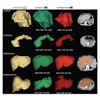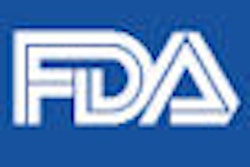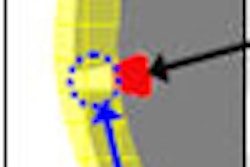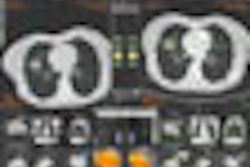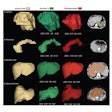In what may be both good and bad news for the computer-aided detection (CAD) software industry, the U.S. Food and Drug Administration (FDA) has released its long-awaited draft guidance for CAD technology.
The FDA on October 21 produced two guidance documents. The first draft provides recommendations regarding 510(k) submissions for CAD devices that already have product codes such as colon CT CAD, lung CT CAD, and chest x-ray CAD. Although they don't yet have codes, CAD involving ultrasound, PET, and MRI are also included in the scope of the guidance.
It covers details on how to describe the device in the application, recommendations on the use of standalone assessment and clinical performance assessment, user training, and labeling.
The second draft provides recommendations on the clinical performance assessment of these devices for both premarket approval (PMA) applications -- including mammography CAD, which continues to be governed by the PMA process -- and 510(k) submissions. It includes details on how vendors should design their clinical studies, the training of study participants, study population issues, the reference standard, reporting, and postmarket planning for PMAs.
In producing the guidance documents, the FDA said it considered recommendations made during the March 2008 FDA Radiology Advisory Public Panel, a meeting that CAD vendors hoped at the time would clear up a bottleneck of delayed regulatory applications.
While it's good news that the CAD industry now has specific guidance for 510(k) submissions, the downside is that the proposed level of requirements are more similar to what vendors would expect from the more rigorous PMA process, said Brent Lewis, director of regulatory affairs and quality assurance at Merge CAD in Bellevue, WA.
For example, the guidelines recommend large amounts of descriptive data, standalone test data, and clinical study data. "The burden goes beyond what was expected by industry for these [submissions]," Lewis told AuntMinnie.com.
Companies will also face a large burden to develop databases of patient data and establish truthing of that data, Lewis said. Device modifications will also require clinical assessment.
"As discussed at the March 2008 Radiological Devices Panel meeting, standalone testing may often be sufficient for algorithmic changes; also, the panel pointed out that a public database of 'truthed' studies would need to be established for manufacturers to be able to accomplish the level of testing recommended by the guidance," he said. "This guidance does not seem to follow those panel recommendations."
While the guidance was well thought out and thorough, the description of what constitutes CAD technology is not as clear as some may have liked, Lewis said. It also leads to concern about a potential unfair advantage for products that received clearance prior to the new guidance.
"The guidance imposes vastly greater requirements for data than have previously been submitted," Lewis said. "Additionally, it imposes predicate comparison requirements that are not feasible or appropriate considering that the data would not have been submitted with the currently cleared predicates. The extensive documentation and testing recommended by the guidance documents impose a level of burden on manufacturers that I believe creates an unlevel playing field."
Carestream Health is pleased that the FDA has released the draft guidance for review and believes that the guidance is consistent with the March 2008 panel discussions, said Sujatha Ramanujan, Ph.D., CAD business product line manager at the Rochester, NY-based firm.
"It removes existing ambiguities and allows us to evaluate the FDA's clinical data requirements," she said. "We look forward to working with CAD industry groups to provide substantive comments and suggestions to FDA during the 90-day review period."
Others are hopeful that the new guidance will eventually lead to breast CAD technology becoming eligible for the 510(k) process.
"Hopefully the 510(k) regulatory approval path for other [CAD technology] (such as colon, lung, or chest) will influence movement of mammography [CAD technology] to the same path in the future," said Patrick Heffernan, Ph.D., CEO and CTO of Three Palm Software of Los Gatos, CA.
Comments and suggestions on the documents, which you can find here and here, should be submitted within 90 days of their publication in the Federal Register.
By Erik L. Ridley
AuntMinnie.com staff writer
October 21, 2009
Related Reading
NY Times story focuses on CAD approval, January 15, 2009
CAD vendors hope FDA hearings will clear approval bottleneck, March 4, 2008
Copyright © 2009 AuntMinnie.com


